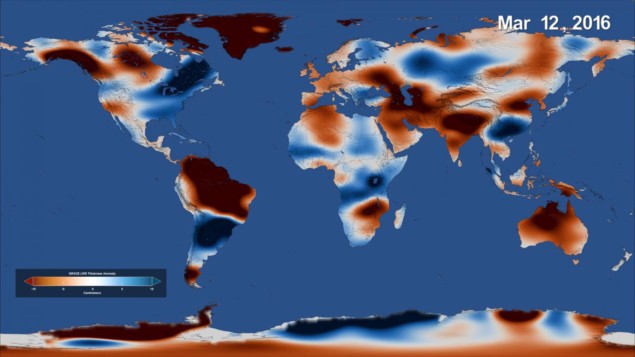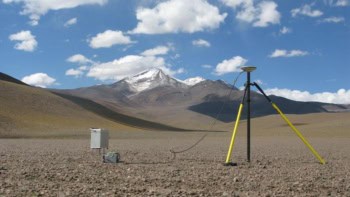
Earth’s wet areas – land in the high latitudes and tropics – are getting wetter while dry areas are becoming more dry, according to 14 years of observations from the Gravity Recovery and Climate Experiment (GRACE) mission. The pattern is due to a mix of factors, including water management by people, man-made climate change and natural climate cycles.
“What we are witnessing is major hydrologic change,” said Jay Famiglietti of NASA’s Jet Propulsion Laboratory (JPL), US, in a press release. While water loss in some regions, like the melting ice sheets and alpine glaciers, is clearly driven by warming climate, he noted, it will require more time and data to determine the driving forces behind other patterns of freshwater change.
“The pattern of wet-getting-wetter, dry-getting-drier during the rest of the 21st century is predicted by the Intergovernmental Panel on Climate Change models, but we’ll need a much longer dataset to be able to definitively say whether climate change is responsible for the emergence of any similar pattern in the GRACE data,” Famiglietti said.
A joint NASA/German Aerospace Centre endeavour, GRACE launched a pair of satellites in 2002. Measuring the distance between the two satellites revealed changes in Earth’s gravity field caused by movements of mass – such as water – on the planet below. The mission ended in October 2017.
For this freshwater analysis, Famiglietti and colleagues combined GRACE data with precipitation data and imagery from other satellites, and reports on human agriculture, mining and reservoir operations.
“This is the first time that we’ve used observations from multiple satellites in a thorough assessment of how freshwater availability is changing, everywhere on Earth,” said Matt Rodell of NASA’s Goddard Space Flight Center. “A key goal was to distinguish shifts in terrestrial water storage caused by natural variability – wet periods and dry periods associated with El Niño and La Niña, for example – from trends related to climate change or human impacts, like pumping groundwater out of an aquifer faster than it is replenished.”
The GRACE Follow-On mission is due to launch from California soon.
The team reported the findings in Nature.


